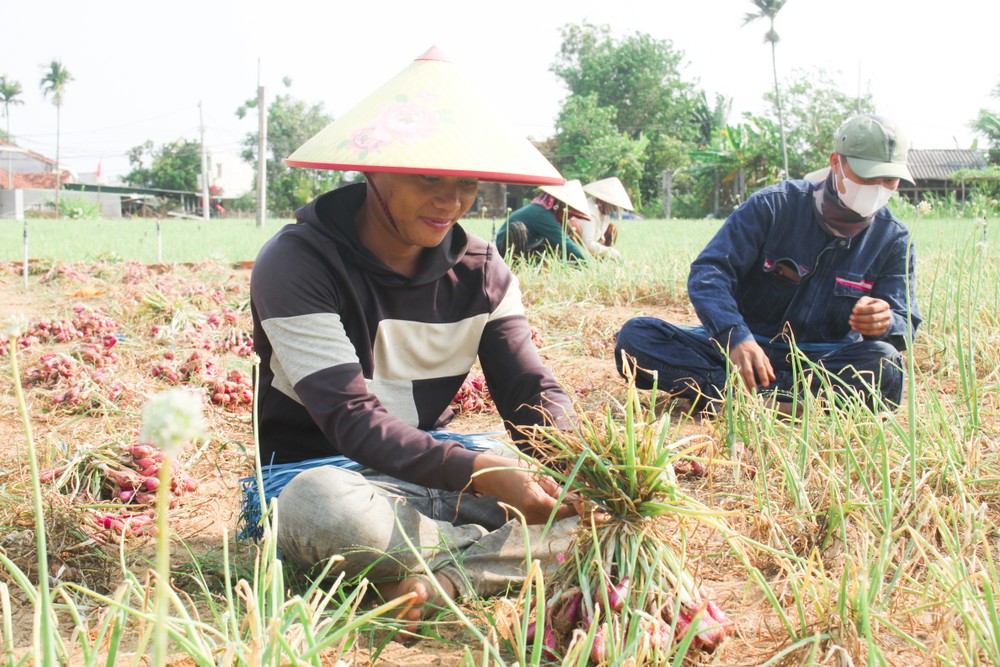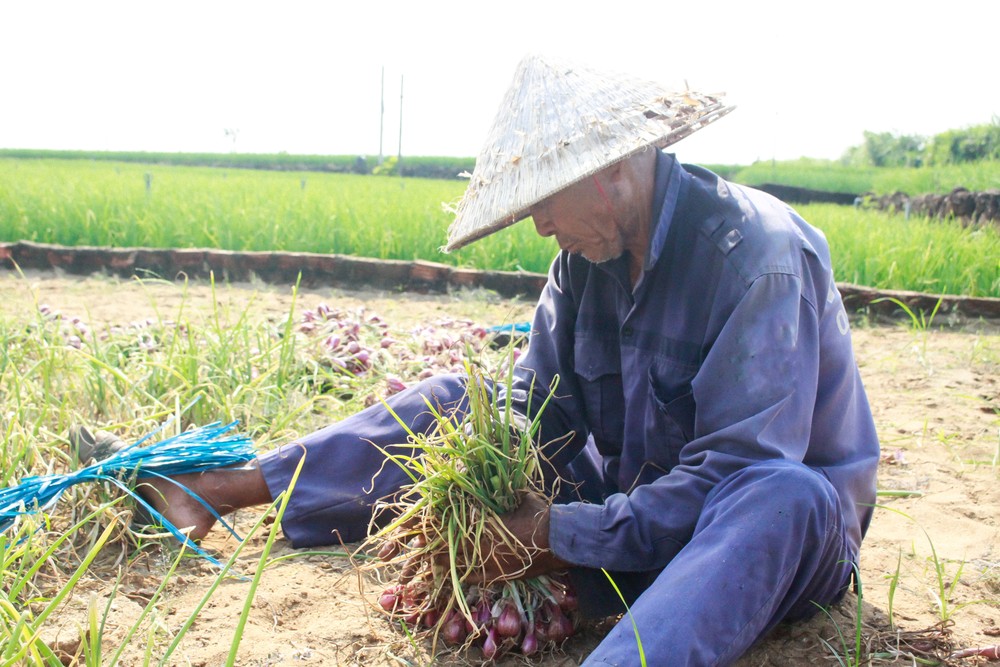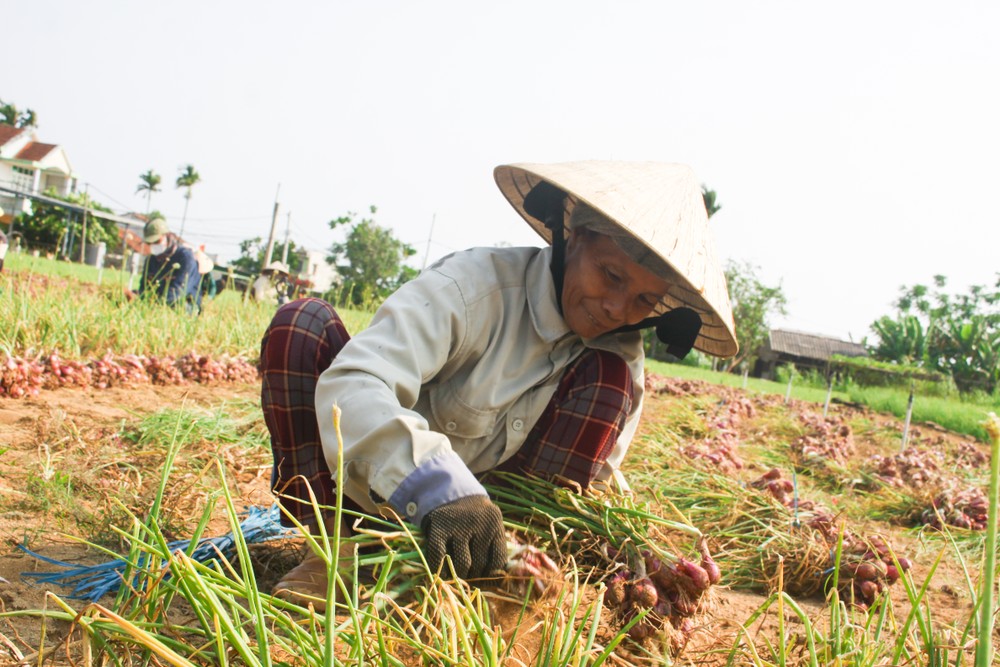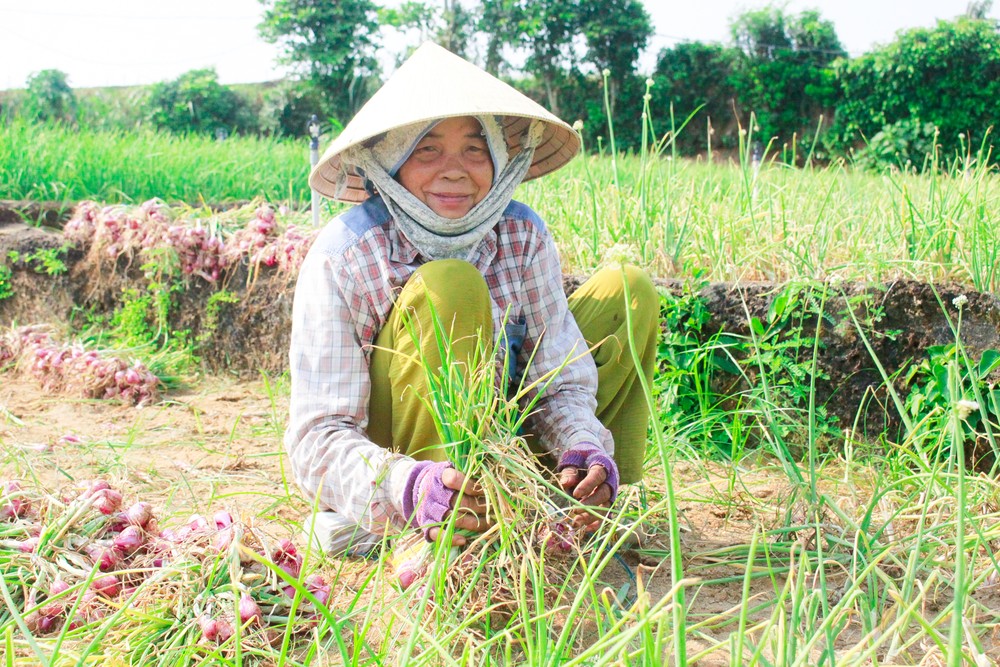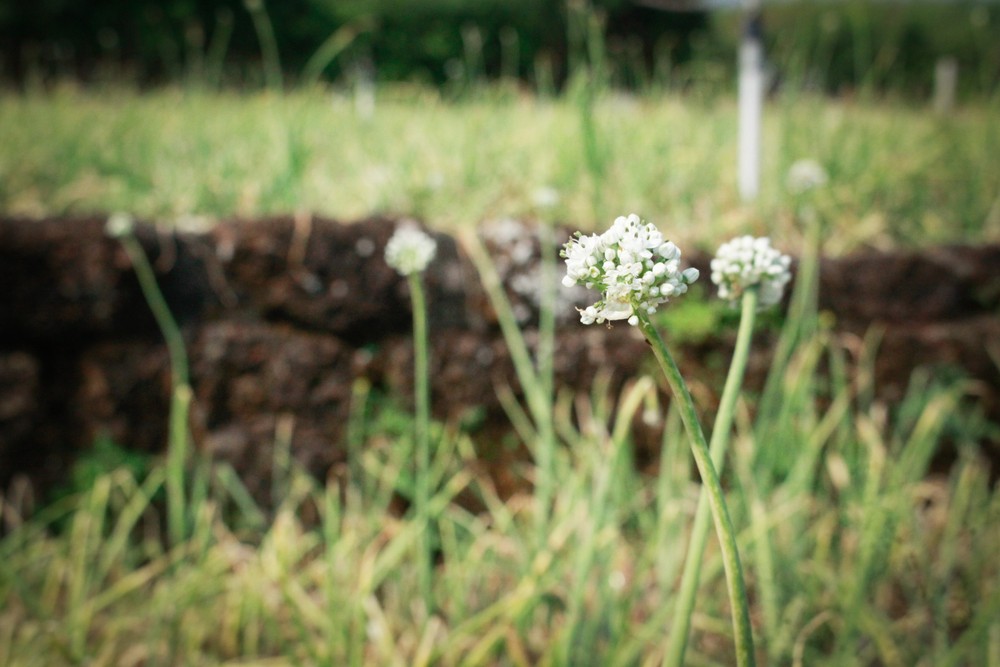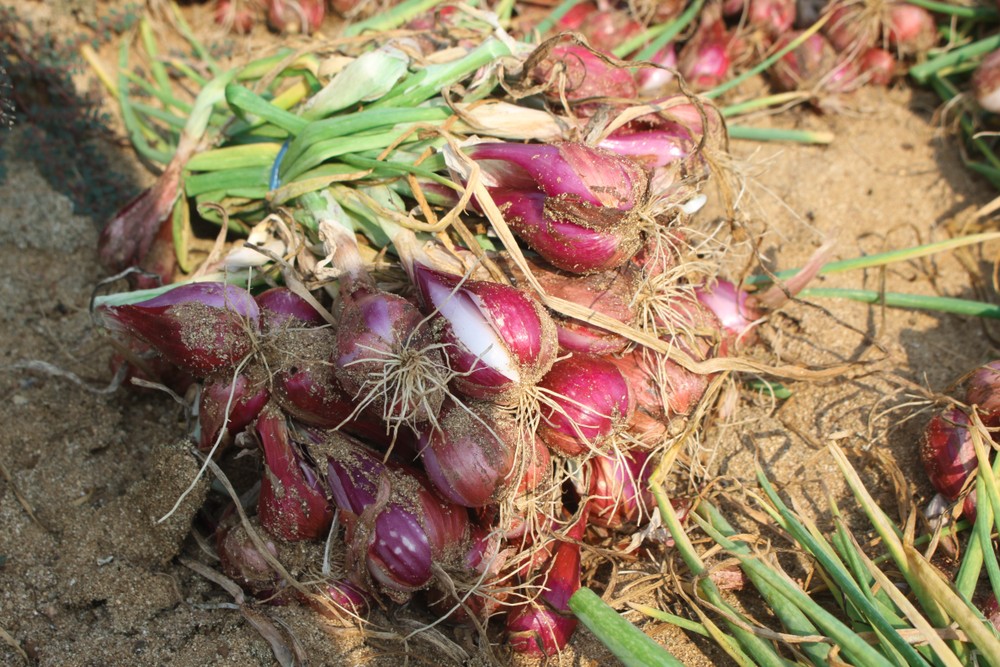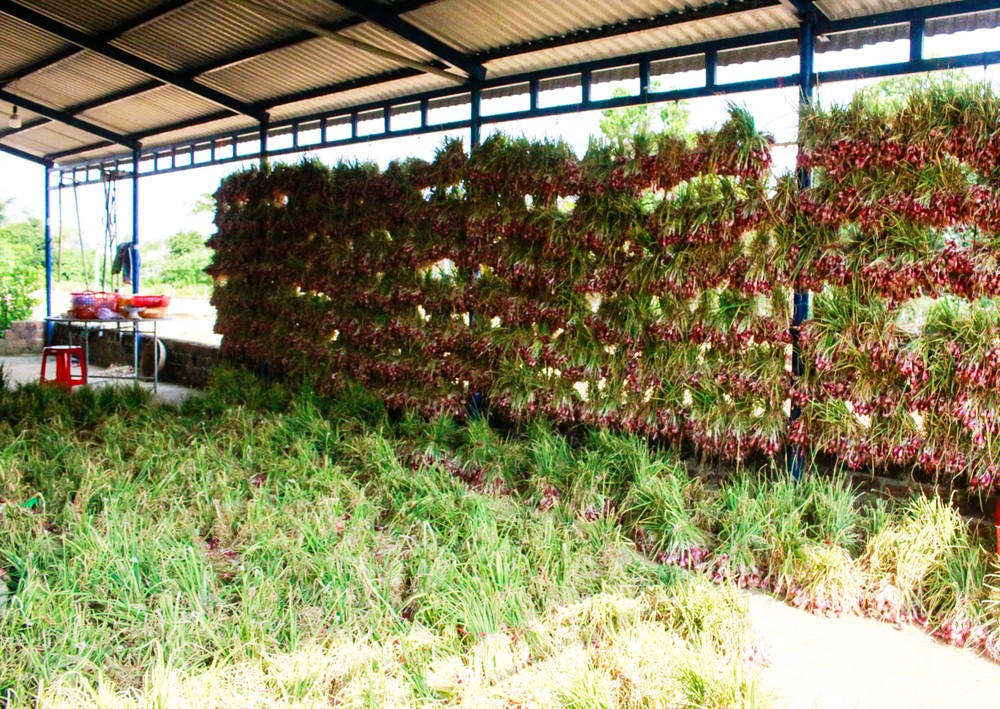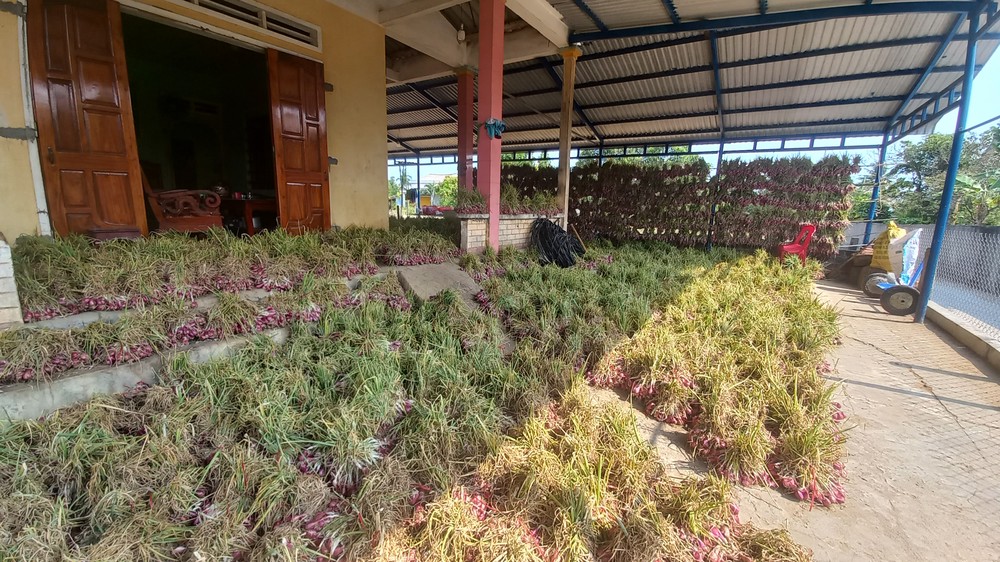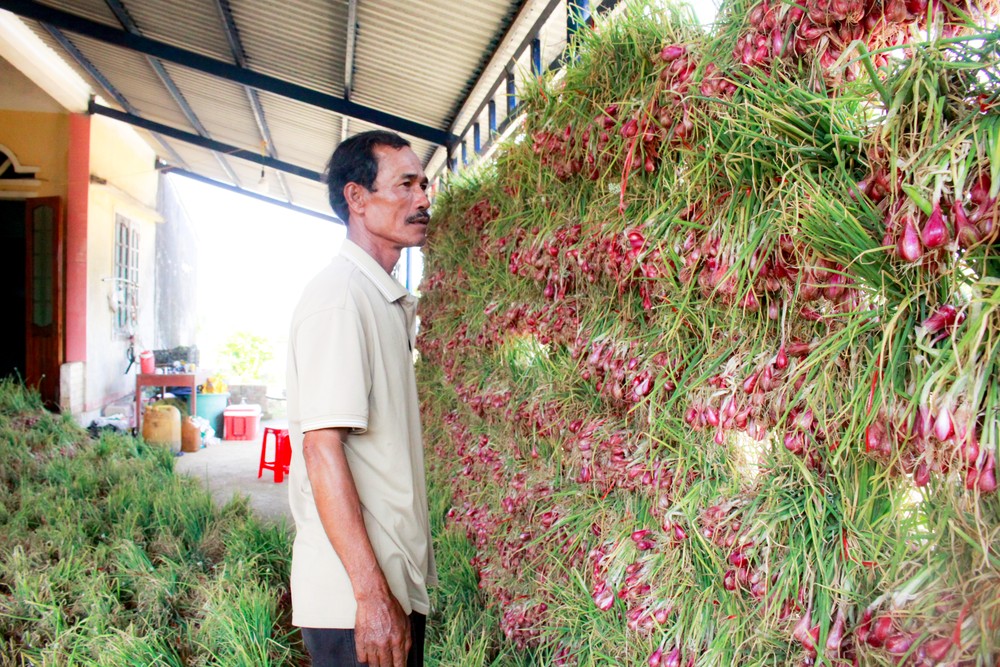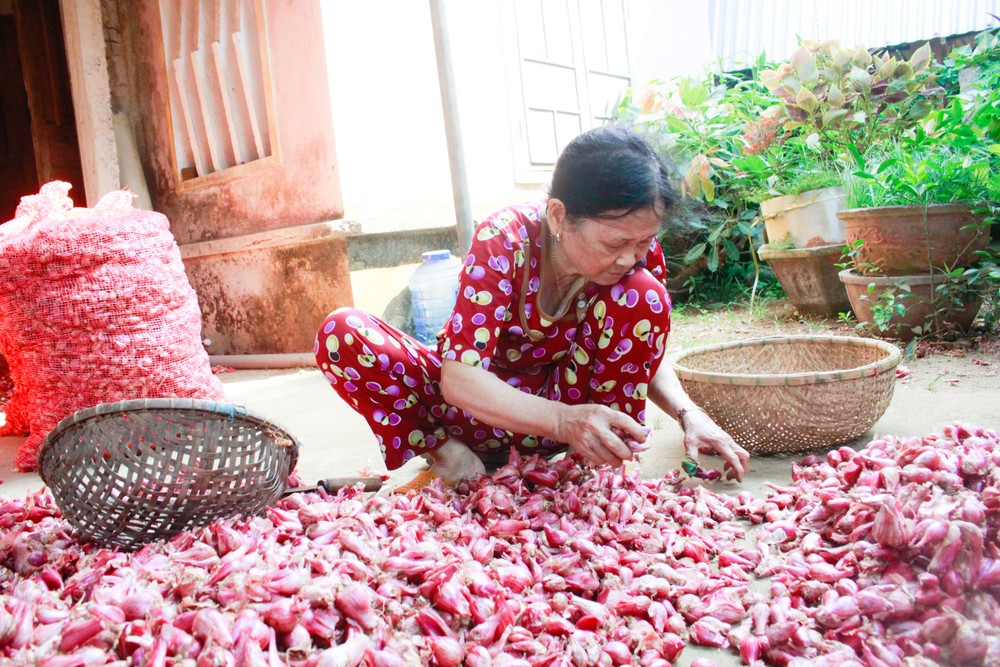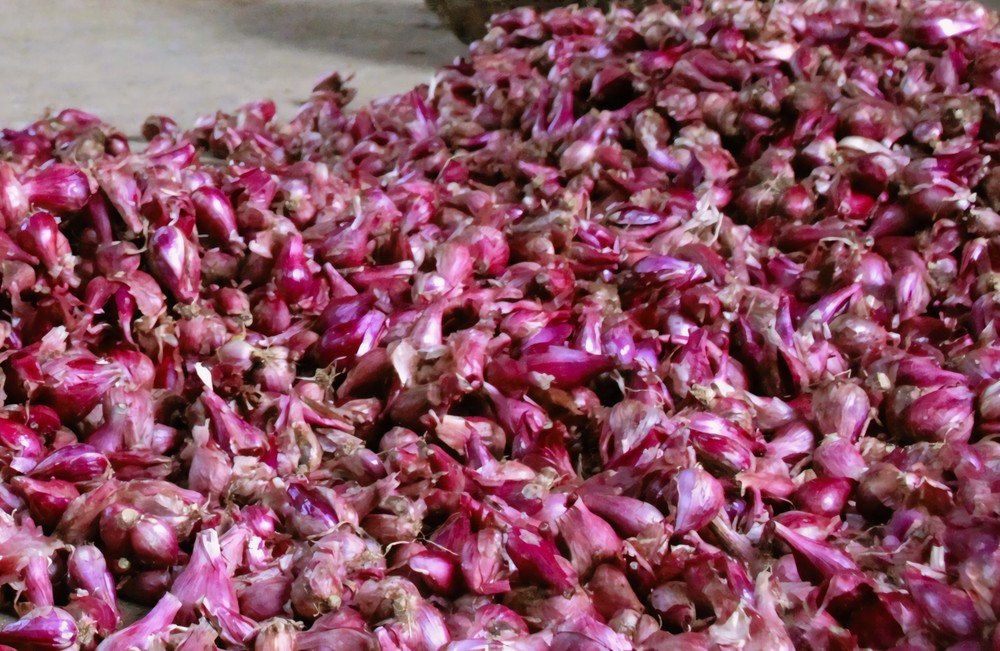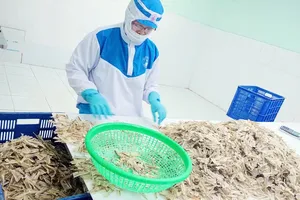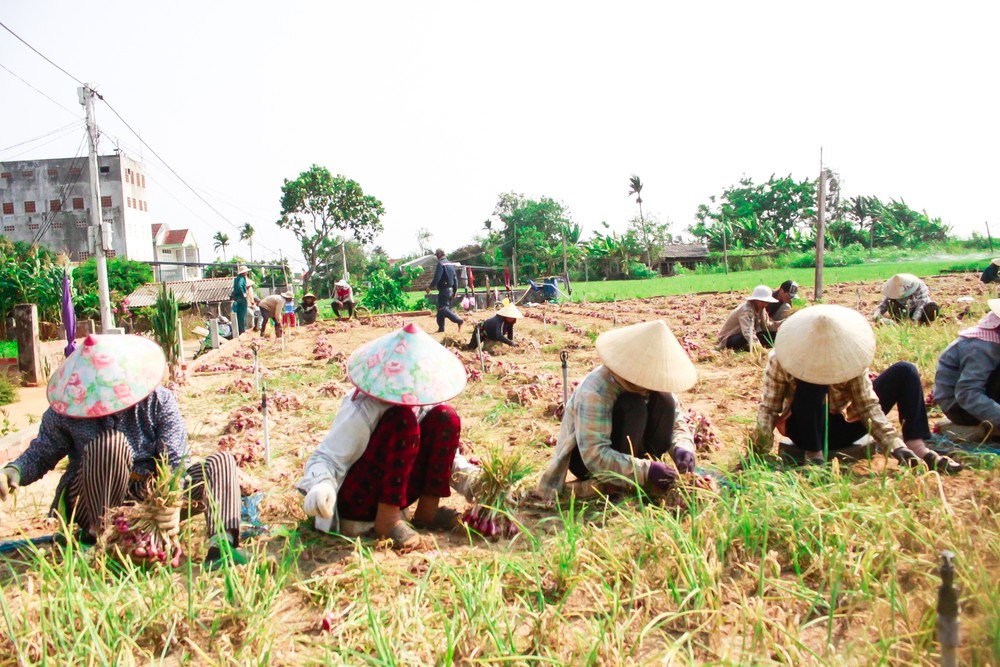
Binh Hai Commune in Binh Son District, Quang Ngai Province, the second-largest shallot hub after Ly Son Island, is currently in the midst of the harvesting season. Shallots are being sold in the fields at a relatively stable price of VND25,000-VND30,000 per kg.
Nguyen Van Tho's shallot field in Thanh Thuy Hamlet requires more than ten people to participate in harvesting. After harvesting, the shallots are brought home, where people cut and sort them, pack them into bags, weigh them, and sell them to traders, who then distribute them to agents within and outside the province.
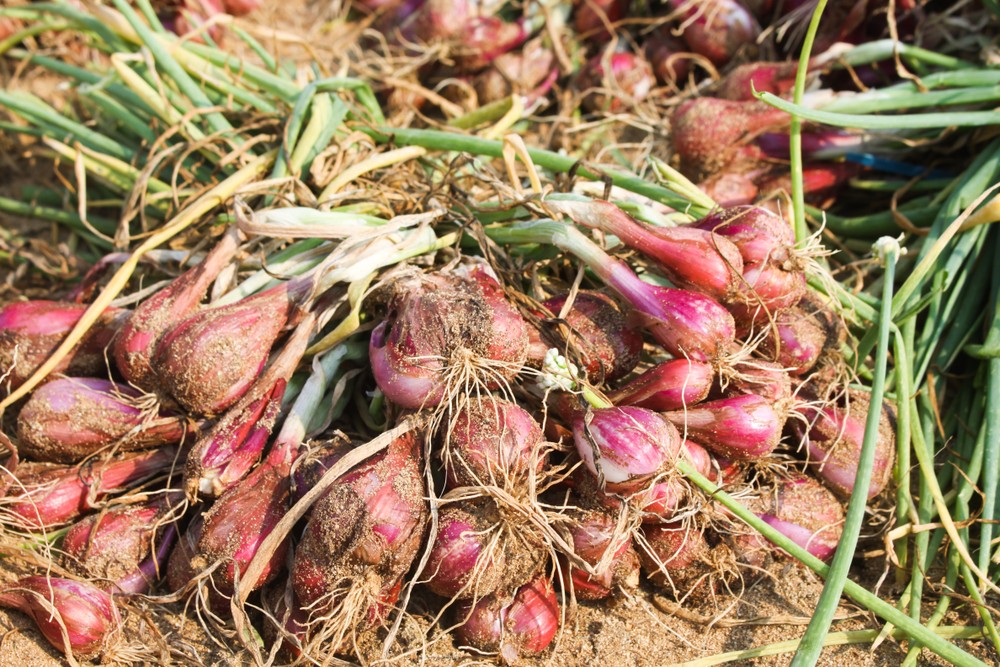
Nguyen Van Tho stated, "This shallot season, my family planted 3,000 square meters of shallots, using about 4 quintals of seeds, and harvested nearly 4 tons of shallots. I sold them to traders for VND30,000 per kg, earning around VND120 million per season. After deducting expenses, I had about VND60 million left. Since my shallot field was harvested earlier than others in the hamlet, the quality of the shallots is good, with large and beautiful bulbs. There are still many areas left to harvest, but some fields have been affected by pests, resulting in lower yields."
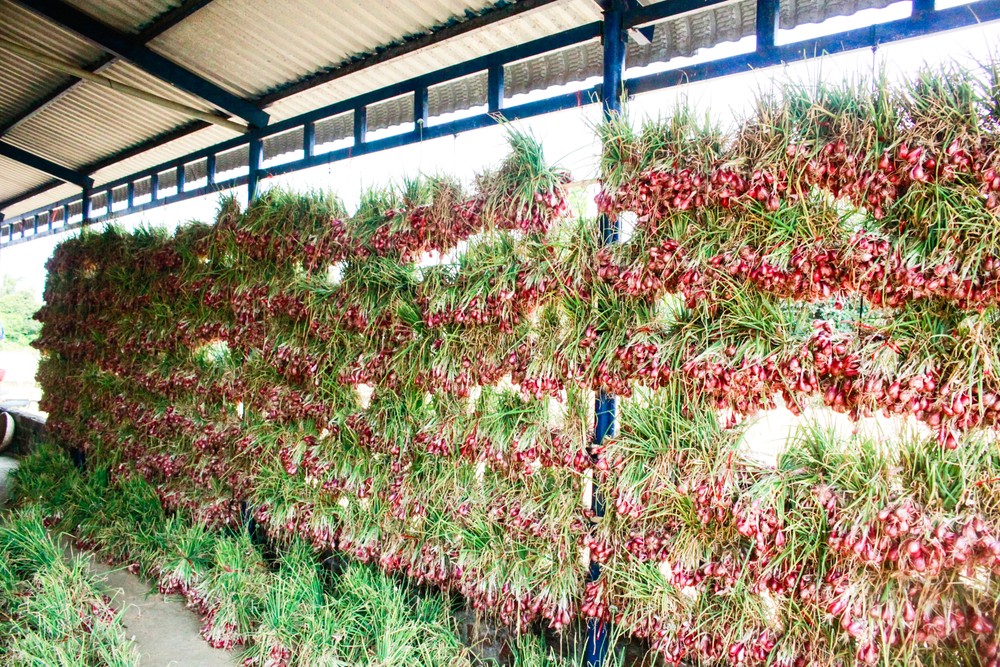
According to locals, on average, 1 kilogram of shallot seeds, after planting and care, can yield around 10 kilograms of shallot bulbs. Each 500 square meters of land requires approximately 1-1.2 quintals of seeds. The harvesting period usually ranges from 45 to 50 days after sowing, when the shallot bulbs are firm in color and the leaves are slightly yellow. During this season, the weather has been favorable for crop growth; however, it has also led to the proliferation of pests such as asparagus fern caterpillar and leaf-miner.
Do Thi Que, a farmer in Thanh Thuy Hamlet, cultivated 1,000 square meters of shallots. She shared that she planted 3 quintals of seeds and harvested around 2 tons. Currently, traders are purchasing shallots for approximately VND25,000 - VND30,000 per kg, depending on the quality of the bulbs. This price is at the average level compared to previous years. If the price rises to VND40,000 per kg at mid-season, farmers will make a higher profit.
Mr. Pham Cau, Vice Chairman of the People's Committee of Binh Hai Commune, said the locality has 180 hectares of shallots, producing three crops annually. The average price for the first crop in 2024 is between VND25,000 and VND30,000 per kg. Faced with pest and disease challenges, the local authorities have been actively guiding farmers to care for their crops and use pesticides to minimize losses.

Shallots have long been a traditional crop for the people of this region, establishing it as the "shallot capital" on the mainland of Quang Ngai Province. Over 30 years ago, shallot seeds from Ly Son were introduced for experimental cultivation, marking the beginnings of a new economic development in the Thanh Thuy area.
By the year 2000, with the extension of electricity to the fields, local residents were able to expand their shallot cultivation. In Thanh Thuy Hamlet alone, out of over 500 households, more than 380 households participate in shallot cultivation, extending to neighboring hamlets such as An Cuong and Van Tuong, thus becoming the backbone of this coastal sandy region.
In Binh Hai Commune, more than 80 percent of households currently rely on shallot cultivation as their primary source of income. Annually, approximately 180 hectares are dedicated to shallot cultivation, yielding three crops and producing over 1,800 tons. The locality has also been granted the "Binh Hai Shallot" trademark by the Intellectual Property Office and is progressively developing specialized cultivation areas adhering to VietGAP standards, covering over 20 hectares.
